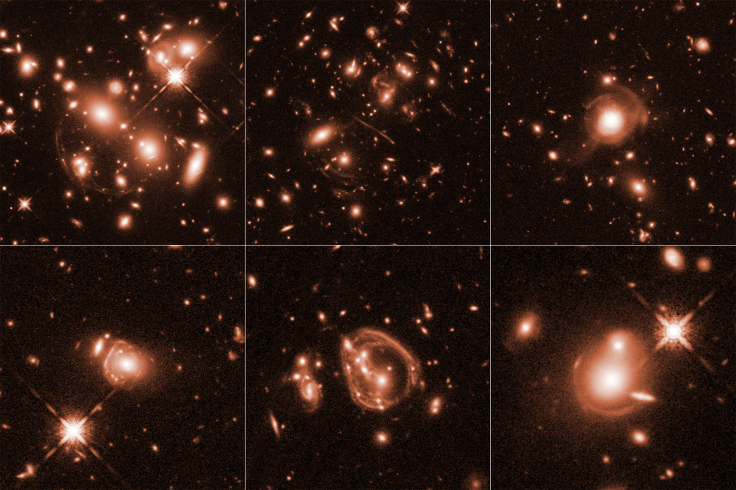NASA’s Hubble Spots Universe’s Brightest Galaxies, Thanks To Gravitational Lensing

Hubble Space Telescope, a collaboration between NASA and European Space Agency, has captured images of the brightest infrared galaxies in the universe, each of which emits about 10,000 times more light than our home galaxy, Milky Way. And Hubble managed this feat thanks to a cosmic phenomenon called gravitational lensing.
The galaxies imaged by the space telescope existed between 8 billion and 11.5 billion years ago, at a time when the universe was at the peak of the rate of star-formation. The brightness of the galaxies, as seen in infrared, is attributed to the rapid birth of stars, with each galaxy pumping out over 10,000 new stars every year. The Milky Way, by contrast, is estimated to produce less than two solar masses in a year.
“The star-birth frenzy creates lots of dust, which enshrouds the galaxies, making them too faint to detect in visible light. But they glow fiercely in infrared light, shining with the brilliance of 10 trillion to 100 trillion suns,” according to a statement Tuesday on the Hubble website.
Read: Hubble Spots ‘Vermin Galaxy’ Start Its Transit
Gravitational lensing is caused by the effect of intense gravity (from a massive galaxy or a galaxy cluster) in the foreground that bends and magnifies the light of objects farther in the distant background. The six images seen above are replete with arcs, smeared rings and streaks, some of which is the distortion caused by the magnification effect of gravitational lensing.
“We have hit the jackpot of gravitational lenses. These ultra-luminous, massive, starburst galaxies are very rare. Gravitational lensing magnifies them so that you can see small details that otherwise are unimaginable. We can see features as small as about 100 light-years or less across. We want to understand what's powering these monsters, and gravitational lensing allows us to study them in greater detail,” James Lowenthal of Smith College in Northampton, Massachusetts, who presented the findings at the American Astronomical Society meeting in Austin, Texas, said in the statement.
Some of the unusual shapes in the images could also be a result of collisions between massive galaxies very far away.
Only a few dozen or so of these ancient ultra-bright infrared galaxies exist, and they are scattered around the universe, found in unusually densely-populated regions of space. They may offer us some insight into how galaxies formed all those billions of years ago.
“There are so many unknowns about star and galaxy formation. We need to understand the extreme cases, such as these galaxies, as well as the average cases, like our Milky Way, in order to have a complete story about how galaxy and star formation happen,” Lowenthal explained.
The researchers still don’t know what causes the galaxies’ fast rate of star-making. They hope that observations made using the Gemini Observatory in Hawaii, and those made using the James Webb Space Telescope — the more powerful successor to Hubble, scheduled to launch in October 2018 — will allow them to determine more details about these bright objects.
© Copyright IBTimes 2024. All rights reserved.





















